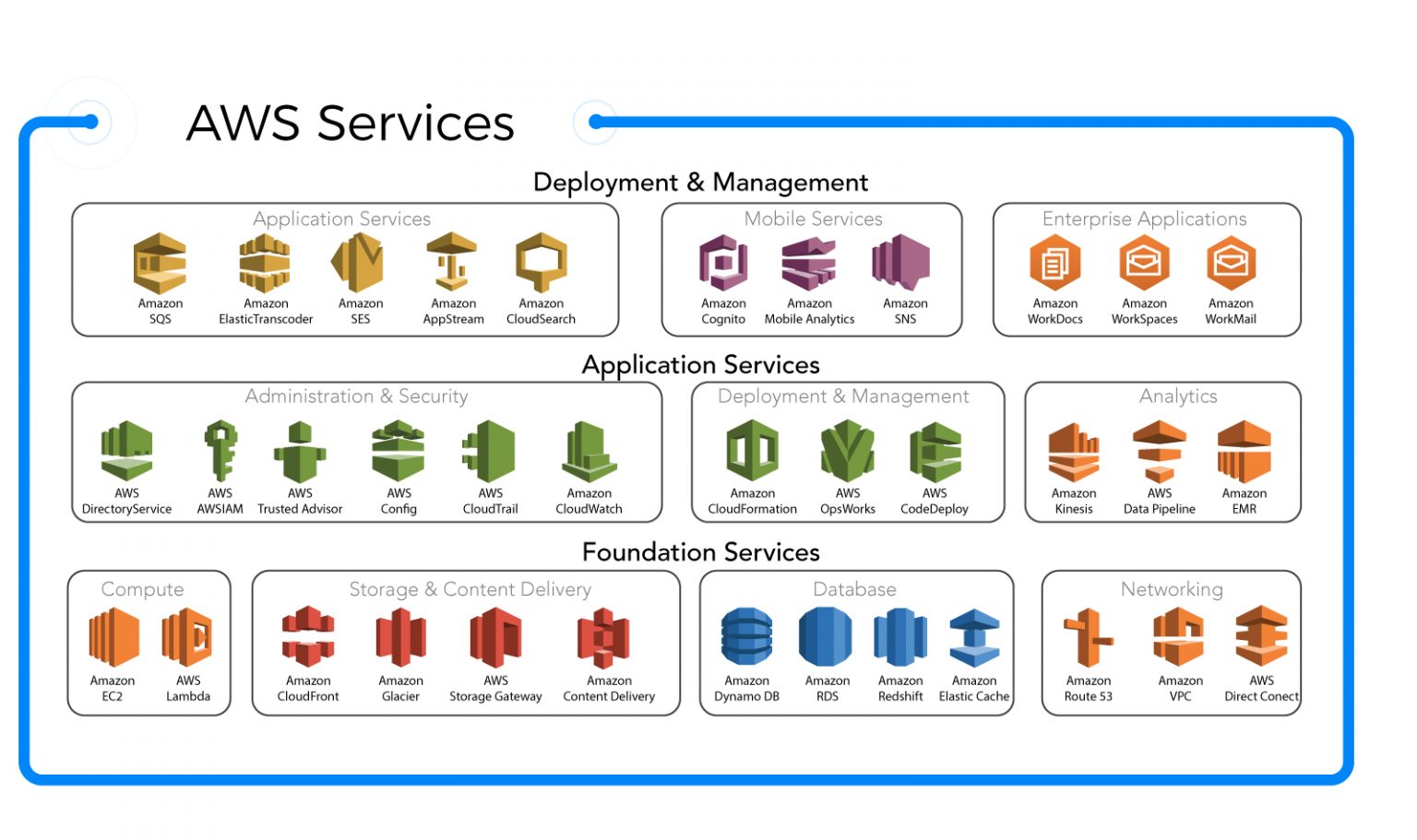AWS Overview
Amazon Web Services is the most popular, and the largest (in terms of market share) web services and cloud platform in the world. But what does cloud really mean? And why is cloud, and AWS so popular in modern days? Before we dive into the AWS services, its worth exploring these questions.
What is Cloud?
Cloud computing is a modern computing framework which aims to optimize the manner in which developers develop web applications. This is a bit vague, so let's dive deeper. Consider the pre-cloud days. if you wanted to build a web application, you would need to rent out servers at a data center. To do this, you'd need to raise a ticket with a data center, their sales rep would contact you in a few days, and within a week or so you'd finally have your servers. Since you were renting a dedicated server, you had to pay the entire cost of renting out the server, even if you didn't use the server the entire day. Moreover, if you needed to scale your application for high-traffic periods, you'd have to raise yet another ticket, to increase the RAM capacity or disk capacity, and wait for a few more days. What about fault tolerance? You'd have to implement it yourself. If your web applicatin was critical, you'd want to replicate it across different regions, which meant hiring yet another set of servers in another region, and manually writing protocols to ensure consistency across the two replicas(take it from a guy who works with distributed systems, this is a major pain). Cloud computing brings with it 4 core ideologies:
- On demand: this means that as a web developer you can provision resources on demand, and not have to raise tickets and go through red tape procedures to rent servers. This on demand model also means that you only pay for what you use, and not for the entire duration of renting.
- High availability: cloud services are designed in a manner such that they offer high availability to clients, so that there are virtually no downtimes experienced in your application.
- Autoscaling: Cloud computing allows for autoscaling of your resources, so that they can be automatically horizontally or vertically scaled within minutes of experiencing varying traffic. This also means that in an ideal cloud environment you can scale up your resources within minutes if not seconds, as opposed to waiting for days to raise a support ticket.
- Fault tolerance: cloud services are meant to provide automatic fault tolerance for their services, so that the developer doesn't have to implement consistency protocols and provision replica servers themselves. This can make the application development process much easier for the developer, since distributed sytems are tricky to correctly implement and require a good knowledge in the field.
Based on these 4, and other ideals, cloud computing paradigms were built, most of them by enterprise level tech companies like Amazon, Microsoft(Azure), Google(GCP), Oracle which provide web developers like you with an integrated envronment to go from idea to app in lightning speed.
How does AWS fit into Cloud
Now that we have an elementary understanding of cloud, let's see how AWS services fit into the paradigm.
AWS provides services under Availability Zones (AZ) which are essentially different global regions where the hardware for the resource is located. There are 81 Availability
Zones spanned across the globe offered by AWS.

- On demand: AWS provides EC2 (Elastic Cloud Compute) services, which are the basic unit of workloads under the AWS environment. These are Virtual Machines that can be spawned on demand within seconds based on a chosen hardware configuration and AZ. The billing for these instances is also based on the hardware configuration used and the duration of time they were running, which fits perfectly into the on demand pricing paradigm.
- High availability: Amazon S3 is an Object Storage service that provides 99.99% availability. This means that your data, stored under S3, will be unavailable for less than a few hours over an entire YEAR, clearly fulfilling the availability paradigm.
- Autoscaling: Elastic Load Balancers (ELB) is a service provided by AWS which not only balances load between different compute resources like EC2, but also allows the user to set up autoscaling policies, which will automatically provision new EC2 instances(horizontal scaling) or ramp up the hardware of existing instances (vertical scaling) automatically based on traffic spikes, without the need for developer intervention.
- Fault tolerance: Take Amazon Aurora, Amazon's highly fault tolerant and high throughput managed SQL database service. Amazon Aurora is replicated across mutliple Availability Zones, and the consistency protolcols are all managed by AWS, which means the user does not have to worry about consistency or replication while using Amazon Aurora, and can rely on an entire Availability Zone to fail (think a flood occurs in an entire AZ wiping away all the data centers in that AZ) and still have lightning fast access to their database records.
Apart from these 4 key features, there are many other features like security with Amazon WAF, DNS configuration with Amazon Route 53, serverless routines using AWS Lambda, serving API's using Amazon API Gateway, Content Distribution Network using Amazon CloudFront, and Amazon SageMaker for MLOps and deploying Machine Learning models, that make AWS an obvious choice for any web developer.